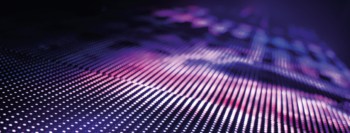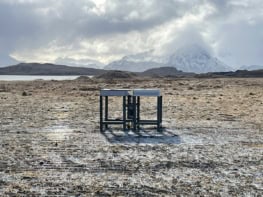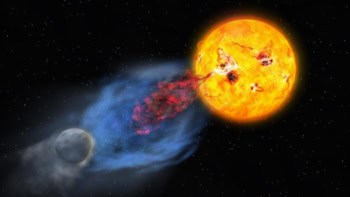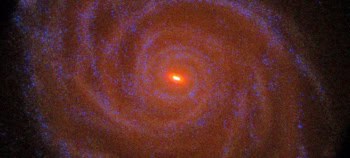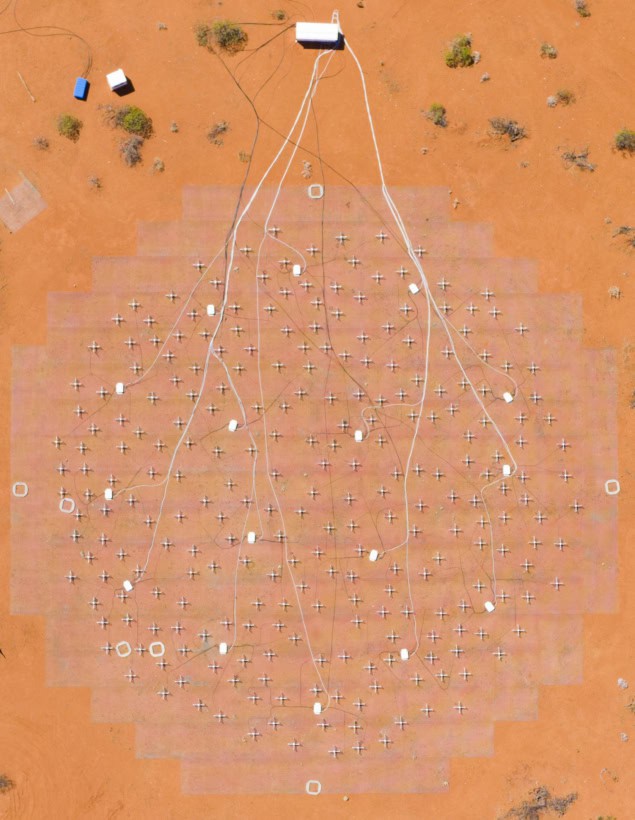
The largest ever survey of low-frequency radio emissions from satellites has detected emissions from the Starlink satellite “mega-constellation” across scientifically important low-frequency bands, including some that are protected for radio astronomy by international regulations. These emissions, which come from onboard electronics and are not intentional transmissions, could mask the weak radio-wave signals that astronomers seek to detect. As well as being damaging for radio astronomy, the researchers at Australia’s Curtin University who conducted the survey say their findings highlight the need for new regulations that cover unintended transmissions, not just deliberate ones.
“It is important to note that Starlink is not violating current regulations, so is doing nothing wrong,” says Steven Tingay, the executive director of the Curtin Institute of Radio Astronomy (CIRA) and a member of the survey team. Discussions with Starlink operator SpaceX on this topic, he adds, have been “constructive”.
The main purpose of Starlink and other mega-constellations is to provide Internet coverage around the world, including in areas that were previously unable to access it. In addition to SpaceX’s Starlink, other mega-constellations include Amazon’s Kuiper (US) and Eutelsat’s OneWeb (UK). This list is likely to expand in the future, with hundreds to tens of thousands of additional satellites planned for launch by China’s Shanghai Spacecom Satellite Technology (operator of the G60 Starlink/Qianfan constellation) and the Russian Federation (operator of the Sfera constellation).
While the effects of mega-constellations on optical astronomy have been widely studied, study leader Dylan Grigg, a PhD student in CIRA’s International Centre for Radio Astronomy Research, says that researchers are just beginning to realize the extent to which they are also adversely affecting radio astronomy. These effects extend to some of the most radio-quiet places on Earth. Indeed, several radio telescopes that were deliberately built in low-radio-noise locations – including the Murchison Widefield Array (MWA) in Western Australia and the Atacama Large Millimeter/submillimeter Array (ALMA) in Chile, as well as Europe’s Low Frequency Array (LOFAR) – have recently detected interfering satellite signals.
Largest survey of satellite effects on radio astronomy data
To understand the scale of the problem, Tingay, Grigg and colleagues turned to a radio telescope called the Engineering Development Array 2 (EDA2). This is a prototype station for the low-frequency half of the Square Kilometre Array (SKA-Low), which will be the world’s largest and most sensitive radio telescope when it comes online later this decade.
Using the EDA2, the researchers imaged the sky every two seconds at the frequencies that SKA-Low will cover. They did this using a software package Grigg developed that autonomously detects and identifies satellites in the images the EDA2 creates.
Although this was not the first time EDA2 has been deployed to analyse the effects of satellites on radio astronomy data, Grigg says it is the most comprehensive. “Ours is the largest survey looking into Starlink emissions at SKA-Low frequencies, with over 76 million of the images analysed,” he explains. “With the real SKA-Low coming online soon, we need as much information as possible to understand the threat satellite interference poses to radio astronomy.”
Emissions at protected frequencies
During the survey period, the researchers say they detected more than 112 000 radio emissions from over 1800 Starlink satellites. At some frequencies, up to 30% of all survey images contained at least one Starlink detection.
“While Starlink is not the only satellite network, it is the most immediate and frequent source of potential interference for radio astronomy,” Grigg says. “Indeed, it launched 477 satellites during this study’s four-month data collection period alone and has the most satellites in orbit – more than 7000 during the time of this study.”

Thirty years of the Square Kilometre Array: here’s what the world’s largest radio telescope project has achieved so far
But it is not only the sheer number of satellites that poses a challenge for astronomers. So, too, does the strength and frequency of their emissions. “Some satellites were detected emitting in bands where no signals are supposed to be present at all,” Grigg says. The list of rogue emitters, he adds, included 703 satellites the team identified at 150.8 MHz – a frequency that is meant to be reserved for radio astronomy under International Telecommunication Union regulations. “Since these emissions may come from components like onboard electronics and they’re not part of an intentional signal, astronomers can’t easily predict them or filter them out,” he says.
Potential for new regulations and mitigations
From a regulatory perspective, the widespread detection of unintended emissions, including within protected frequency bands, demonstrates the need for international regulation and limits on unintended emissions, Grigg tells Physics World. The Curtin team is now working with other radio astronomy research groups around the world with the aim of introducing updated policies that would regulate the impact of satellite constellations on radio astronomy.
In the meantime, Grigg says, “We are in an ongoing dialogue with SpaceX and are hopeful that we can continue to work with them to introduce mitigations to their satellites in the future.”
The survey is described in Astronomy & Astrophysics.
